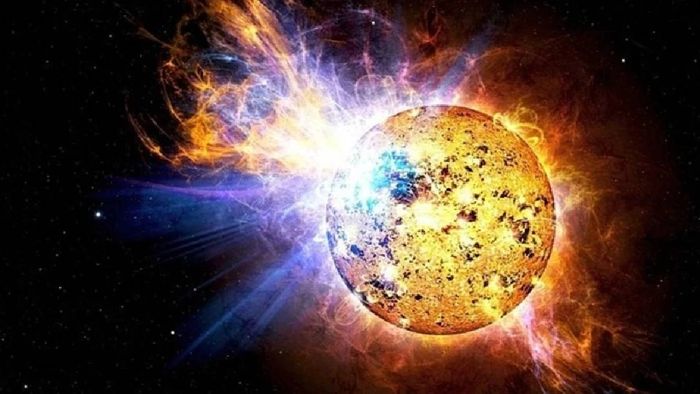Sunspot AR3575 unleashes powerful M4-class solar flare, speculating potential impact on earth
The sunspot AR3575 erupted on February 6th, producing a potent M4-class solar flare. This solar activity has sparked concerns about its potential impacts on Earth.

- Feb 06, 2024,
- Updated Feb 06, 2024, 4:59 PM IST
The sunspot AR3575 experienced a significant eruption on February 6th, producing a robust M4-class solar flare. The eruption propelled a hot plasma plume at an astonishing speed of over 400 km/s (900,000 mph), resulting in the creation of a Coronal Mass Ejection (CME). While the CME is yet to be observed in SOHO coronagraphs, the US Air Force quickly reported a Type II radio burst, indicating shock waves from an unseen CME.
The pivotal question arises: Will this solar event impact Earth? Forecasters are closely monitoring data from SOHO coronagraphs in the upcoming hours to model the trajectory of the CME. The potential consequences of an Earth impact could range from geomagnetic storms to disruptions in communication systems.
The solar flare had immediate effects on our planet, causing a shortwave radio blackout over Australia. A flash of extreme ultraviolet radiation ionized the top of Earth's atmosphere, leading to signal losses for ham radio operators and mariners below 30 MHz for up to an hour after the flare's peak.
Sunspot AR3575 continues to be a cause for concern due to its 'beta-gamma-delta' magnetic field, which harbors energy for even more powerful X-class solar flares. NOAA forecasters estimate a 25% chance of such an explosion on February 6th, keeping space weather experts and astronomers on high alert.
As scientists gather more data and monitor the unfolding events, the potential impacts on Earth's magnetic field and communication systems remain uncertain. This solar activity serves as a poignant reminder of the dynamic nature of our sun and its potential influence on our planet.